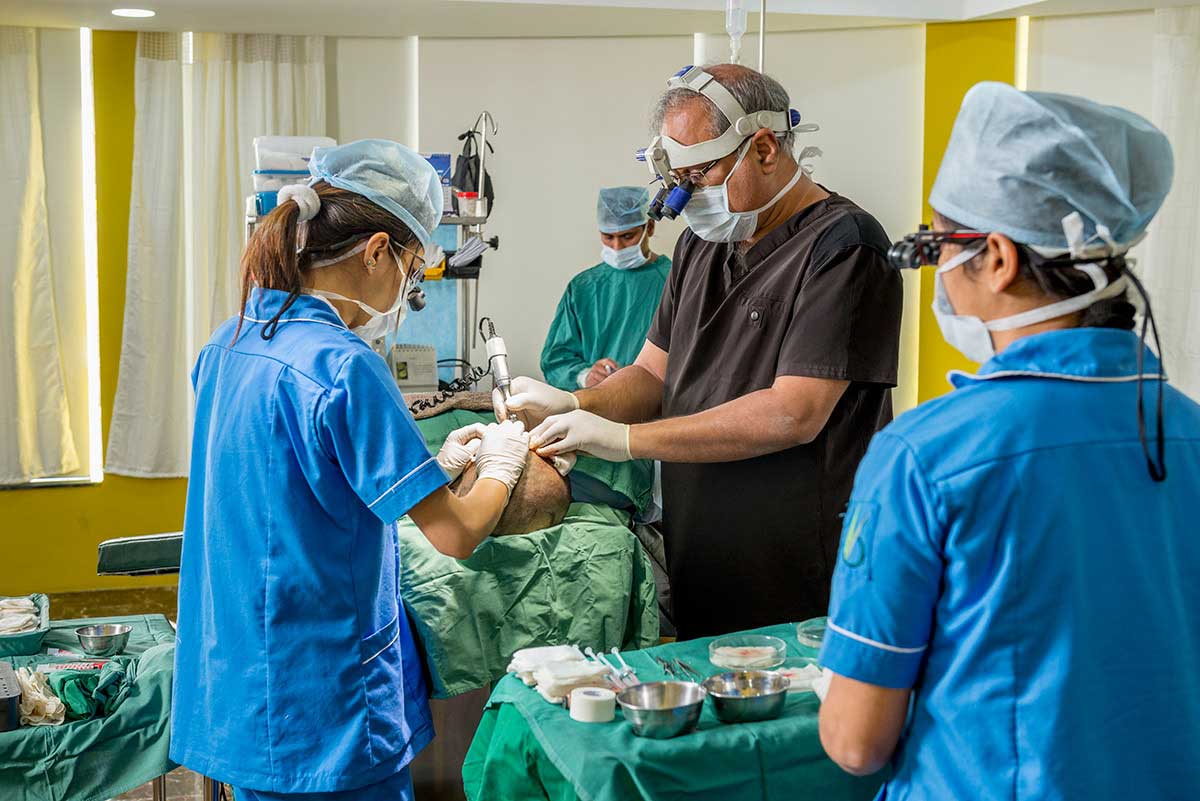At the age of 83, Mr. Shaun walked into our clinic with a quiet dignity, yet behind his calm exterior lay a deeper longing: to reclaim something he felt he had lost over time. Hair — often dismissed as vanity — had become for him a silent burden. Hair loss is not merely cosmetic; it stirs insecurities, identity shifts, and emotional weight. In many men and women, every thinning patch stirs ghosts of youth, self-esteem, and social confidence. To assert that “you’re too old for hair transplant” is to perpetuate a bag full of lies.

From the first consultation, we stressed: age is only a number. What truly matters is not the digits on one’s birth certificate, but biology — the quality of one’s donor area, scalp health, systemic medical fitness, and stable hair loss pattern. The myth that hair transplants “fail” in older age is perpetuated by fear, misunderstanding, and outdated precedents—not by science. In fact, the International Society of Hair Restoration Surgery (ISHRS) explicitly states that excellent results are not only possible in men over 50, but commonly seen in those well into their 70s and beyond.
When we assessed Mr. Shaun, several critical factors were favorable. His donor zone (posterior and lateral scalp) demonstrated good follicular density and viability—a reservoir of follicles genetically resistant to androgenetic miniaturization. His scalp tissue was supple, with good vascularity and no active inflammatory disease. Systemically, he was in stable health with well-controlled vital parameters, no contraindications to local anesthesia or minor surgery, and no coagulopathy or scalp pathology. These were far more relevant than his chronological age.
We chose the DHX method (Direct Hair eXtraction / a variant of direct implantation techniques) for its advantages in minimizing graft out-of-body time, optimizing graft survival, and reducing handling trauma. (DHX is analogous in principle to advanced DHI/FUE hybrid methods, where extraction and implantation are streamlined to preserve viability.) The shorter the duration a follicle remains “exposed,” the better its oxygenation, viability, and ultimate survival. This is especially crucial in older patients whose follicles may already be more delicate.
On the day of surgery, under local anesthesia, grafts were harvested carefully and immediately implanted in the recipient zones, with precise attention to angle, depth, and natural hair direction. Because the DHX method demands skilled micro-handling, we proceeded in phases to safeguard each graft. The goal was not an aggressive overplanting, but a natural, age-appropriate restoration — hair that would grow in harmony with his existing pattern, not in defiance of it.
In the weeks following the procedure, the initial shedding (the “shock loss” phase) was anticipated and gently explained to Mr. Shaun. But what followed was the true transformation: budding vellus hairs emerged by the third month; by month six, thicker terminal shafts began to appear; and by month nine to twelve, a meaningful aesthetic density had taken form. His hairline no longer looked “too young” for an 83-year-old, but rather dignified, rejuvenated, and appropriate.
Beyond aesthetics, this restoration carried emotional weight. Those closest to him remarked that his face seemed more alive, his expression more confident, and his posture subtly more upright. In observer studies of hair transplant outcomes, treated individuals are often perceived as younger, more attractive, more successful, and more approachable.
For Mr. Shauan, the hair was not a magic wand—but it was a bridge restoring a psychological balance, an outer gesture supporting an inner renewal.
It bears repeating: the myth that hair transplantation “fails” in the elderly is rooted in outdated dogma, not in fact. What fails is often the planning — failing to assess donor adequacy, failing to tailor the approach, or failing to manage patient expectations. Age alone is not a contraindication. What matters is:
Donor reserve and viability
Scalp and vascular health
Stable pattern of hair loss
Overall physical health and capacity for healing
Realistic expectations
If those criteria are met, even an 83-year-old can enjoy lifelong hair growth from transplanted grafts.
Importantly, we counselled Mr. Sharma that he would continue to age, and that adjunctive therapies (medical therapy, scalp care) may support the longevity of both native and transplanted hair. Also, we emphasized that he should be patient — full maturation of transplanted hair may take 12 to 18 months in older patients.
In conclusion, Mr. Shaun’s case stands as living proof: age is only a number. Hair loss is deeply emotive, touching identity, esteem, and daily perception. But the notion that hair transplant is futile in advanced years is demonstrably false. With a healthy body, a viable donor area, and a refined technique such as DHX, one can achieve renewal even into one’s ninth decade. The barrier is not age — it is the unwillingness to look at the facts. The gift is not just hair — it is reclaimed dignity, restored balance, and a stronger sense of self.


